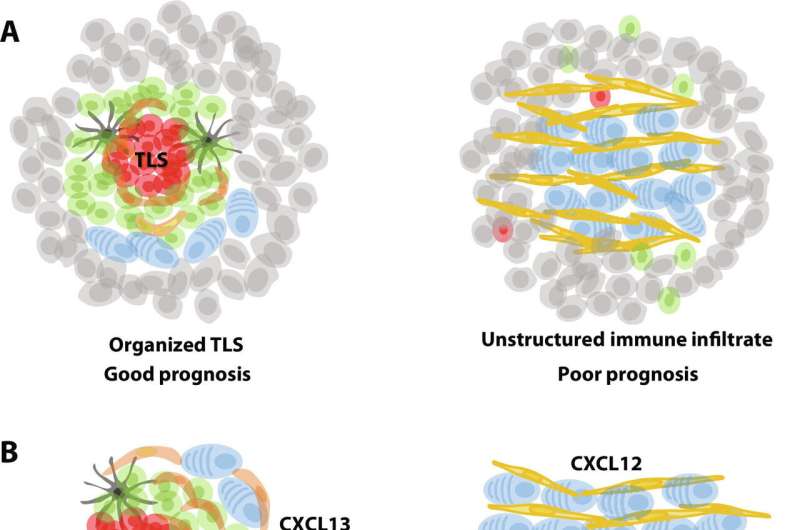
Using spatial analysis of tissue samples, Cedars-Sinai investigators have identified patterns that could predict whether patients with the most common type of ovarian cancer will experience early relapse after treatment. These patterns, detailed in a study published in Science Advances, could point to possible therapies.
“Using spatial protein analysis, we looked not only at the types of cells within and around a tumor, but also at their relative positions and how they interact,” said Alex Xu, Ph.D., a research scientist at Cedars-Sinai Cancer and the Board of Governors Regenerative Medicine Institute at Cedars-Sinai and first author of the study.
Investigators’ analysis of ovarian cancer tissue samples identified patterns consistently associated with patients whose cancer relapsed soon after treatment, Xu said.
“Spatial analysis is the next frontier in tissue biomarker development and our group has demonstrated the importance of spatial analysis in several cancer types,” said Akil Merchant, MD, a senior author of the study and director of the Spatial Molecular Profiling Core facility at Cedars-Sinai Cancer.

High-grade serous ovarian carcinoma is the deadliest form of ovarian cancer, and ovarian cancers are particularly challenging because they are difficult to detect, Xu said. Frequently, patients with these tumors respond to initial treatment with surgery and chemotherapy but the cancer recurs.
In this study, investigators looked at tissue samples from 42 patients who had ovarian cancer—both primary tumors and tumors that recurred after patients’ initial treatment—using a technology called imaging mass cytometry, which reveals the spatial protein content of the tissue. The investigators’ main findings centered around plasma cells, a crucial part of the tumor immune response.
“Our findings suggest that plasma cells are a clinically important factor determining a patient’s time to relapse,” Xu said. “Previous research into their role has been contradictory, with some studies suggesting their presence predicted negative outcomes while others suggested positive outcomes.”
Here investigators found that outcomes were associated with the location of the plasma cells, and their relationship to adjacent cells types.
“Plasma cells were associated with good patient outcomes when lymphoid aggregates, which are structures that include T and B cells, were also abundant in the area immediately surrounding the tumor,” Xu said. “This could be because the plasma cells were part of these organized structures that facilitated communication between these immune cells, thus improving their ability to attack the tumor.”
Plasma cells were linked with poor patient outcomes when cells called cancer-associated fibroblasts, which are known to interfere with the activity of immune cells, were plentiful, which suggested that fibroblasts may be preventing plasma cells from communicating with other immune cells.
“These different microenvironments could account for sometimes differing reports about the role of plasma cells in patient prognosis,” said Dan Theodorescu, MD, Ph.D., director of Cedars-Sinai Cancer and the PHASE ONE Distinguished Chair. “This avenue of investigation could help us identify biomarkers, or even precision therapies, that improve outcomes for patients with this particularly deadly cancer.”
More information:
Alexander M. Xu et al, Spatiotemporal architecture of immune cells and cancer-associated fibroblasts in high-grade serous ovarian carcinoma, Science Advances (2024). DOI: 10.1126/sciadv.adk8805
Citation:
Researchers identify patterns that predict ovarian cancer relapse (2024, April 18)
patterns-ovarian-cancer-relapse.html
.
. The content is provided for information purposes only.
